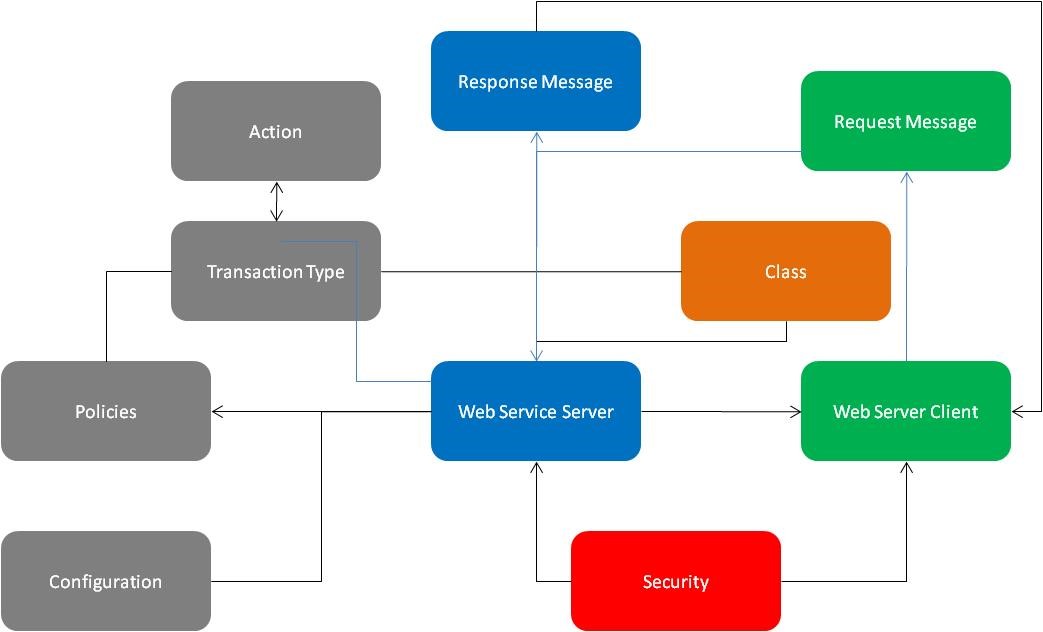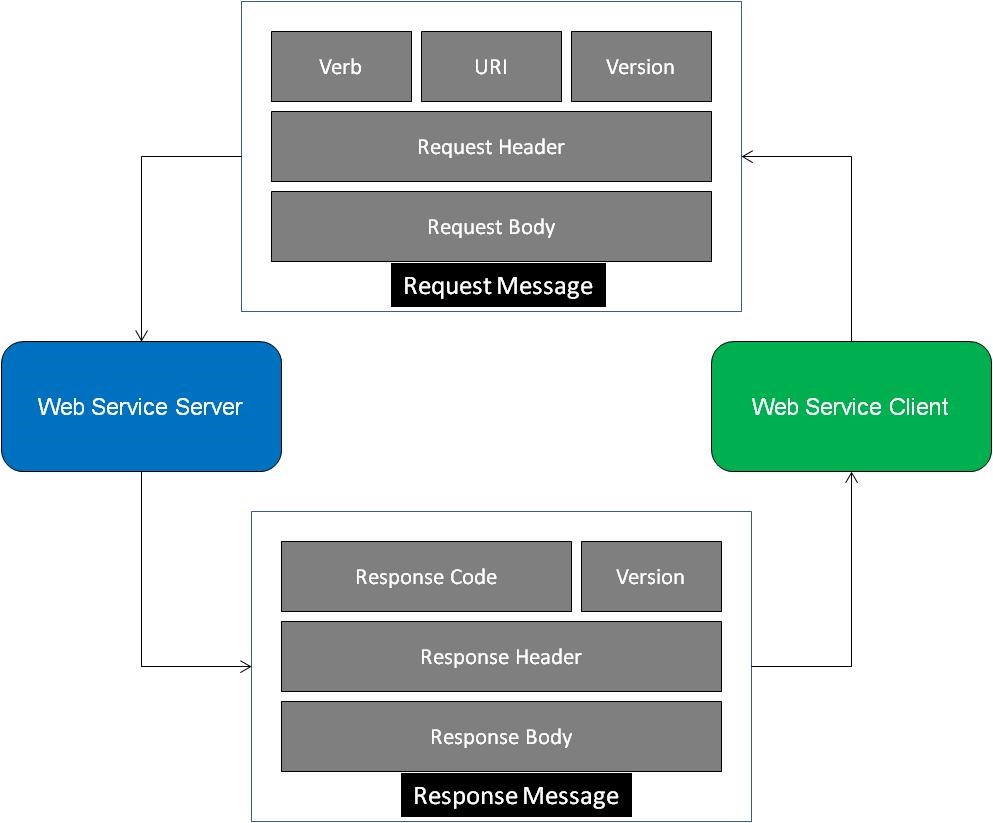The SSAXML API is a Layer 7 Inter-Application Protocol based on SOAP and supports various Markup Languages. It is schema-based and will grow to include approx.100 schemas. Each schema will handle specific segments of Social Security Administration Data such as Employers, Employees, Beneficiaries, Financial Institutions, Healthcare Providers, Individuals, Social Security Numbers, Benefit Contributions, Contribution Payments, Benefit Claims, Benefit Claims Payments, Documentation, Compliance, Delinquencies, Court Orders, Refunds, and Payment Adjustments. The aim of the SSAXML API is to enable software providers who provide software for Social Security Administration to communicate with each other using one Global SSA API that is open to all, thus lowering the cost to clients and providers.
The SSASXML API is a set of web services (servers) that are used to provide access to Interact SSAS Data and Processes to external Applications. External applications/systems will be able to use Web Service Clients to request a service from the SSAXML API. The SSAXML API is based on a REST API Architecture. It offers a mechanism that enables an application or service to access a resource within another application or service, in this case SSAS. The application or service that accesses resources is the client, and the application or service that contains the resource is the server.
Since SSAXML API is based on a RESTful design, clients of the service will benefit from the following key REST design principles:
Uniform interface – All API requests for the same resource look the same, no matter where the request comes from. The REST API ensures that the same piece of data, such as the name or email address of a user, belongs to only one uniform resource identifier (URI). Resources will contain every piece of information that the client might need.
Client-server decoupling – Client and server applications are completely independent of each other. The only information that the client application needs to know is the URI of the requested resource; it can’t interact with the server application in any other ways. Similarly, a server application cannot modify the client application other than passing it to the requested data via HTTP.
Statelessness – Each request needs to include all the information necessary for processing it. In other words, SSAXML APIs do not require any server-side sessions. Server applications aren’t allowed to store any data related to a client request.
Cacheability – When possible, resources are cacheable on the client or server side. Server responses also will contain information about whether caching is allowed for the delivered resource. This will improve performance on the client side, while increasing scalability on the server side.
Layered system architecture – In SSAXML APIs, the calls and responses can go through different layers. Client and server applications do not need to connect directly to each other. There may be a number of different intermediaries in the communication chain. Neither the client nor the server can tell whether it communicates with the end application or an intermediary.
SSAXML API Framework
The SSASXML API is based on REST API Server/Client Framework at the lower level, and consists of the following framework components at the higher level as shown in Figure-1:
Figure-1: SSAXML API Framework
Security – This component is used to handle the security and access control of the Web Service Clients. It defines each Web Service Client as a user with a User ID, Password, Public and Private Keys, License, and the Granular Access Control of the Web Service Client. Before any Web Service Client can talk to SSAS Web Service Server, it needs to be defined as a user and consumer of SSAXML Web Services (API). Once defined, the Web Service Client can connect through a URL and submit its credentials to be authenticated buy the Security component of the SSAXML API Framework.
Policies – Policies are used to define the general parameters and rules used by the Web Service Servers and include Web Service Servers definition, Transaction Types, Error Codes and Messages, Alert Codes and Messages, Web Service Messages XML Schemas, etc.
Configurations – These are configuration files used by the Web Service Servers that define how each Web Service Server is configured.
Transaction Types – Transaction type define all the transaction types that are handled by the API. There is one Transaction Type per Web Service Server. Once Web server Service handles one transaction type. Transaction types include Employer, Registration, Social Security Number, Social Security ID Card, Contribution Filing, Benefit Claim, Benefit Claim Payment, Social Security Statement, etc.
Actions – These are the actions that can be performed on a transaction type such as Create/Add, Update, Delete, Review, Approve, and Reject. When a client web service submits a request to the web service server it needs to specify the transaction type and the action.
Classes – Classes are used to implement the business logic and input control of each Web Service Server. Each Web Service Server is implemented using one PhP Class, which handles all the business logic and input control and output associated with the Transaction type handled by the Web Service Server.
Web Service Servers – Web Service Servers are the Web Services that provide services to the Web Service Clients. Each Web Service Server is responsible for handling one Transaction Type and is implemented using one PhP Class. The Web Service Servers are implemented using REST API framework and PhP.
Web Service Clients – Web Service Clients are the Web Services that request services from the Web Service Servers. Web Service Clients can be implemented in any language as long as they comply with the REST API guidelines. For a Web Service Client to access a Web Service Server, it needs a set of credentials and needs to know how to communicate with the Web Service Server through the API messaging Protocol.
Request Message – This is the message sent by the Web Service Client to the Web Service Server requesting specific service and data.
Response Message – This is the message sent by the Web Service Server to the Web Service Client as a response to the Web Service Client request.
SSAXML API Messaging Protocol
The SSAXML APII messaging protocol define the format of the messages sent between the Web Service Client and the Web Service Server and vice versa. At the low level, all messages sent between the requester (Web Service Client) and the provider (Web Service Server) and back, are REST http messages (request/response), HTTP is the carrier of the message, while at the high level, the API message includes more detail errors handling that go beyond HTTP errors/codes. SSAXML Messaging is based on the HTTP Request and Response Messaging Protocol described below:
Figure-2: Messaging Protocol
HTTP Request Message
- Verb − Indicates the HTTP methods such as GET, POST, DELETE, PUT, etc.
- URI − Uniform Resource Identifier (URI) to identify the resource on the server.
- HTTP Version − Indicates the HTTP version. For example, HTTP v1.1.
- Request Header − Contains metadata for the HTTP Request message as key-value pairs. For example, client (or browser) type, format supported by the client, format of the message body, cache settings, etc.
- Request Body − Message content or Resource representation.
HTTP Response Message
- Status/Response Code − Indicates the Server status for the requested resource. For example, 404 means resource not found and 200 means response is ok.
- HTTP Version − Indicates the HTTP version. For example HTTP v1.1.
- Response Header − Contains metadata for the HTTP Response message as key value pairs. For example, content length, content type, response date, server type, etc.
- Response Body − Response message content or Resource representation.
- Request Body − Message content or Resource representation.
The formats of the Request Messages from the Client and the Response Messages from the Servers are known as the Messages XML Schemas. The Messages Schemas are framed by Version Number, Transaction Type, and Action based on REST API Methods that require data in the body of the request pass the data as an XML block. In addition, all API methods return data in the response using an XML block.
The schema for the XML used in requests and response is available in a schema (.xsd) file. When you construct XML for a request, you must make sure that the XML block is well formed and that it conforms to the schema.
A client can ask for JSON representation whereas another client may ask for XML representation of the same resource to the server and so on. It is the responsibility of the REST server to pass the client the resource in the format that the client understands.
Examples
Below are examples of functionalities of a web Service Server called Employer Management:
| No. | URI | HTTP Method | POST body | Result |
| 1 | /EmployerService/listEmployers | GET | Empty | Returns a list of all employers. |
| 2 | /EmployerService/addEmployer | POST | JSON String | Adds new employer. |
| 3 | /EmployerService/getEmployer/:id | GET | Empty | Returns the details of an employer given employer ID |
In the same Web Service Server Employer Management – an employer is a resource which is represented using the following XML or JSON format:
Resource: Employer using XML:
<employer>
<id>3460</id>
<name>Bakery LLC</name>
<EID>97899</EID>
<city>New York</city>
<country>USA</country>
</employer>
Resource: Employer using JSON:
{
"id":3460,
"name":"Bakery LLC",
"city:"New York",
"country:"USA"
}
Figure3 – SSAXML API Policy Setup
| SSAS Module | SSAXML API Transaction Types |
|---|---|
| Employer Management | Employer Management |
| Registration Management | Individual Management |
| Registration Information Changes | |
| Financial Institution Management | Financial Institute Registration |
| Social Security Number Management | Social Security Number Application |
| Temporary SSN to Permanent Conversion | |
| Social Security ID Card Management | Social Security ID Card Application |
| Social Security Contribution Filing Management | Employer Contribution Filing |
| SE Contribution Filing | |
| VC Contribution Filing | |
| Social Security Contribution Payments Management | Contribution Payment |
| Receivables Management | Invoice |
| Cashier and Payment Management | Cashier |
| Cashier Opening Balance | |
| Cashier Payments | |
| Cashier Closing Balance | |
| Penalties Management | Penalty |
| Social Security Benefit Claims Management | Sickness Benefit Claim |
| Maternity Benefit Claim | |
| Maternity Grant Benefit Claim | |
| Employment Injury Benefit Claim | |
| Medical Benefit Claim | |
| Funeral Grant Benefit Claim | |
| Disablement Benefit Claim | |
| Invalidity Benefit Claim | |
| Death Benefit Claim | |
| Retirement Benefit Claim | |
| Survivor Benefit Claim | |
| Social Security Benefit Payments Management | Sickness Benefit Payment |
| Maternity Benefit Payment | |
| Maternity Grant Benefit Payment | |
| Employment Injury Benefit Payment | |
| Medical Benefit Payment | |
| Funeral Grant Benefit Payment | |
| Disablement Benefit Payment | |
| Invalidity Benefit Payment | |
| Death Benefit Payment | |
| Retirement Benefit Payment | |
| Survivor Benefit Payment | |
| Payables Management | Voucher |
| Medical Visits and Diagnosis Management | Healthcare Provider Patient Visit |
| Medical Referee Request | |
| Contribution Refunds & Adjustments Management | Contribution Refund Request |
| Contribution Refund Payment | |
| Contribution Adjustment Request | |
| Benefit Payment Adjustments Management | Benefit Payment Adjustment Request |
| Compliance Management | Compliance Audit |
| Audit Checklist | |
| Audit Action | |
| Legal Action | |
| Lawsuit | |
| Court Order | |
| Arrear Installment Agreement Management | Arrears Installment Agreement |
| Arrears Installment Payment | |
| Delinquency Management | Delinquency |
| Third Party Payment Management | Third Party Payments |
| Social Security Statements | Social Security Statement |
| Document Management | Document |
| Award Letters Management | Award Letter |
| GL Posting | Contribution Payment GL Posting |
| Benefit Payment GL Posting | |
| KYC Management | KYC Update |
| Case Management | Case |
Appendix-C – Web Services Servers
| Transaction Types | Web Service Servers |
| Employer Management | EmployerService |
| Individual Management | IndividualService |
| Registration Information Changes | RegistrationChangeService |
| Financial Institute Registration | InstituteRegistrationService |
| Social Security Number Application | SSNService |
| Temporary SSN to Permanent Conversion | TempSSNConversionService |
| Social Security ID Card Application | SSIDCardService |
| Employer Contribution Filing | EmployerContributionFilingService |
| SE Contribution Filing | SEContributionFilingService |
| VC Contribution Filing | VCContributionFilingService |
| Contribution Payment | ContributionPaymentService |
| Invoice | InvoiceService |
| Cashier | CashierService |
| Cashier Opening Balance | CashierOpeningBalanceService |
| Cashier Payments | Cashier PaymentsService |
| Cashier Closing Balance | CashierClosingBalanceService |
| Penalty | PenaltyService |
| Sickness Benefit Claim | SicknessClaimService |
| Maternity Benefit Claim | MaternityClaimService |
| Maternity Grant Benefit Claim | MaternityGrantClaimService |
| Employment Injury Benefit Claim | InjuryClaimService |
| Medical Benefit Claim | MedicalClaimService |
| Funeral Grant Benefit Claim | FuneralClaimService |
| Disablement Benefit Claim | DisablementClaimService |
| Invalidity Benefit Claim | InvalidityClaimService |
| Death Benefit Claim | DeathClaimService |
| Retirement Benefit Claim | RetirementClaimService |
| Survivor Benefit Claim | SurvivorClaimService |
| Sickness Benefit Payment | SicknessBenefitPaymentService |
| Maternity Benefit Payment | MaternityBenefitPaymentService |
| Maternity Grant Benefit Payment | MaternityGrantBenefitPaymentService |
| Employment Injury Benefit Payment | InjuryBenefitPaymentService |
| Medical Benefit Payment | MedicalBenefitPaymentService |
| Funeral Grant Benefit Payment | FuneralBenefitPaymentService |
| Disablement Benefit Payment | DisablementBenefitPaymentService |
| Invalidity Benefit Payment | InvalidityBenefitPaymentService |
| Death Benefit Payment | DeathBenefitPaymentService |
| Retirement Benefit Payment | RetirementBenefitPaymentService |
| Survivor Benefit Payment | SurvivorBenefitPaymentService |
| Voucher | VoucherBenefitPaymentService |
| Healthcare Provider Patient Visit | HealthcareProviderVisitService |
| Medical Referee Request | MedicalRefereeRequestService |
| Contribution Refund Request | ContributionRefundRequestService |
| Contribution Refund Payment | ContributionRefundPaymentService |
| Contribution Adjustment Request | ContributionAdjustmentRequestService |
| Benefit Payment Adjustment Request | BenefitPaymentAdjustmentRequestService |
| Compliance Audit | ComplianceAuditService |
| Audit Checklist | AuditChecklistService |
| Audit Action | AuditActionService |
| Legal Action | LegalActionService |
| Lawsuit | LawsuitService |
| Court Order | CourtOrderService |
| Arrears Installment Agreement | ArrearsInstallmentService |
| Arrears Installment Payment | ArrearsInstallmentPaymentService |
| Delinquency | DelinquencyService |
| Third Party Payments | ThirdPartyPaymentService |
| Social Security Statement | StatementService |
| Document | DocumentService |
| Award Letter | AwardLetterService |
| Contribution Payment GL Posting | ContributionPaymentGLService |
| Benefit Payment GL Posting | BenefitPaymentGLService |
| KYC Update | KYCUpdateService |
| Case | CaseService |
Web Service Servers Description
EmployerService
- Employer List
- Employer by ID
- Add New Employer
- Update Employer
- Delete Employer
- Approve Employer
- Activate Employer
- Inactivate Employer





